This is the second of a two-part blog series about creating team and project spaces in Confluence. You can find the first part here.
Let’s pick up where we left off in the last blog post. At Atlassian, the answer to the title of this blog post, is ‘both’. We primarily dedicate spaces to a team – we have spaces for our marketing team, development team, and HR team. But some projects are HUGE and require their own space, too, so we have a number of spaces dedicated to bigger projects – like a cross-product initiative, website redesign, or competitor information.
In this blog post I’m going to share examples of how Atlassians have structured our project spaces on our intranet.
Creating a space for a project
There are a number of different ways to create a space for a project so it’s difficult to be prescriptive. But similar to a team space it’s important to make the homepage of a space a dashboard for your project. One of our big projects at Atlassian is something called, ‘Engaging First Impressions’, which is a cross-functional, cross-product project aimed to make it easier for users to get started using any Atlassian product.
1. Set goals, define stakeholders, track progress
As you can see below, the homepage of the project space has been divided up into some key components. The project’s vision is clearly defined, the relevant stakeholders are shown, and the project’s goals are clearly stated and being tracked in real-time using the SQL macro. You can’t see in the screenshot below, but the project’s key pages are listed below so it’s easy for anyone visiting the space to find the information they need.
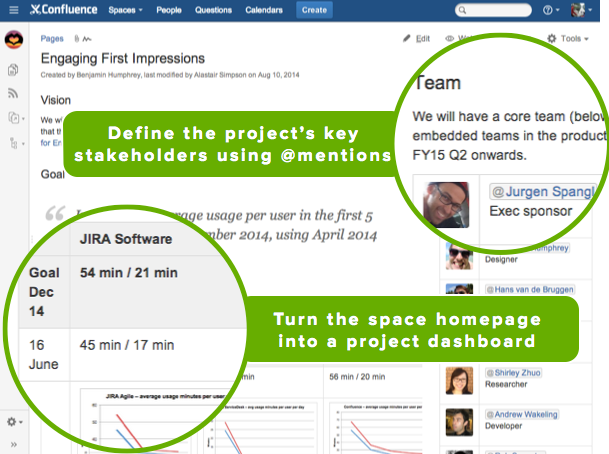
Here’s another example of a project space on our company intranet. ACE stands for ‘Atlassian Communications Engine’ and the goal of the project is to empower the millions of users of our products with valuable content (like this blog post) so they can get more out of our tools. The top of the space home page is very similar to the project page above.
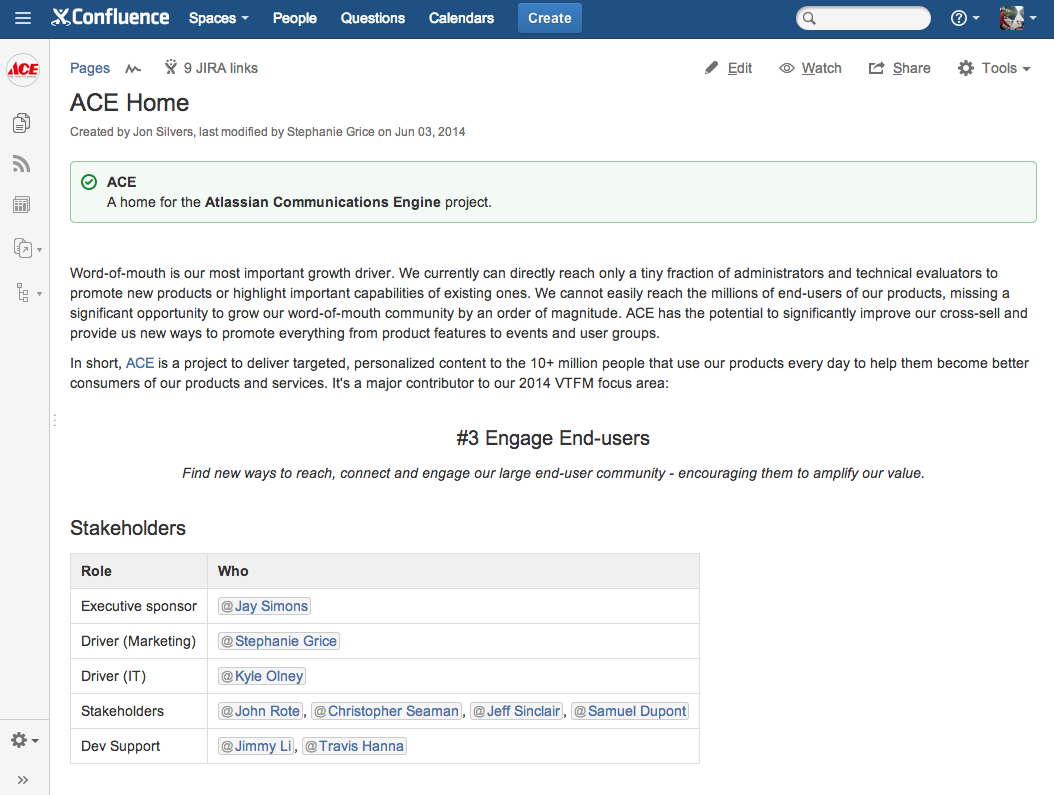
Further down the page, the project lead has added the project’s objectives, important documentation for the project, and a team calendar that tracks all of the project’s important deliverables and milestones.
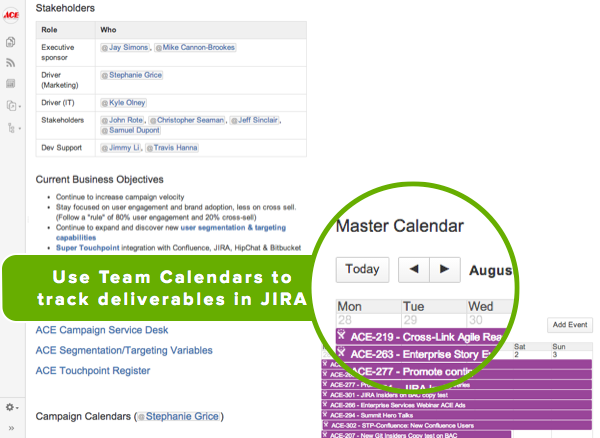
Unique space use-case: The Atlassian Playbook
Our Design Team has been on a mission for the last year to turn Atlassian into a design-driven company. In order to change the output, the look, feel, and experience of our products, the design team has tasked themselves with changing the input. That means helping every team think like a designer when tackling problems and projects.
The design team created a space in Confluence called the Playbook. It’s a set of ‘plays’, or exercises, that dig into whatever issue you’re trying to solve. Below you can see what the home page of the Playbook space looks like. The team has made it very easy (and visual) to understand the significance of the space.

The design team encourages every Atlassian to perform elevator pitches, journey maps, empathy maps, or build-a-boxes for their projects to get at the root of what they’re doing and provide some consistency to the way Atlassian solves problems for themselves and our customers.
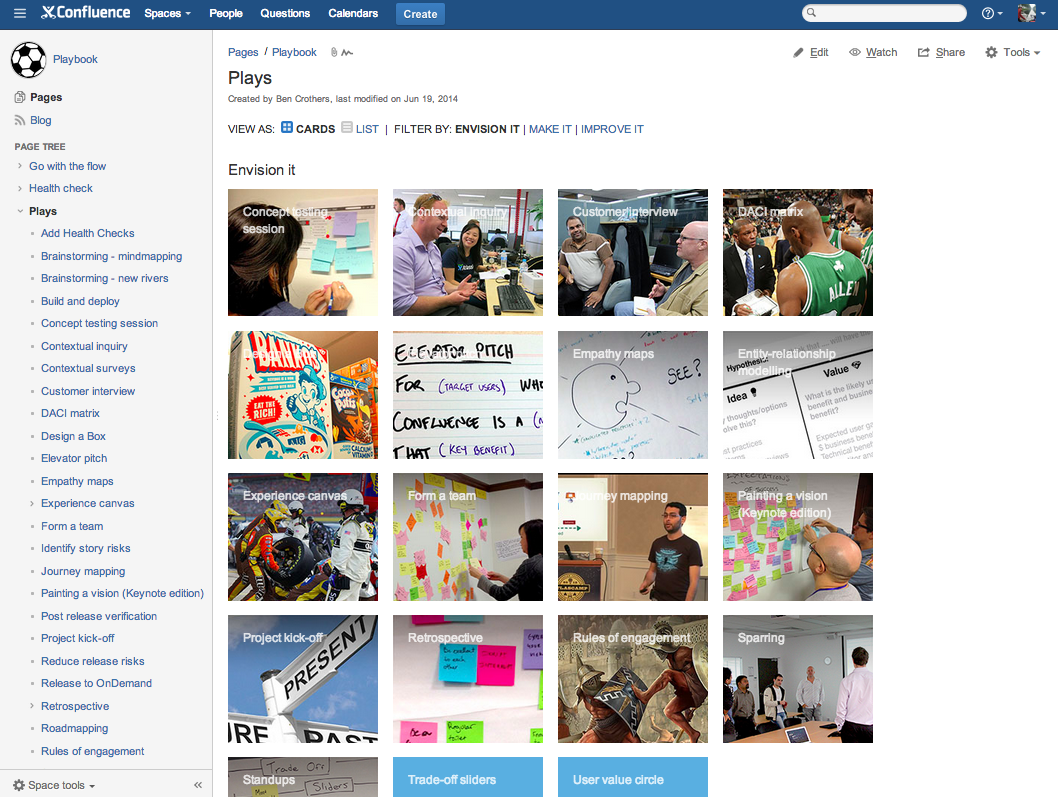
Each play is expertly detailed with guidelines and tips. An important section of the play is the ‘Allstars at this play’ section. This makes it easy for someone who is new to the play to connect with a Subject Matter Expert of the play and get advice and feedback.
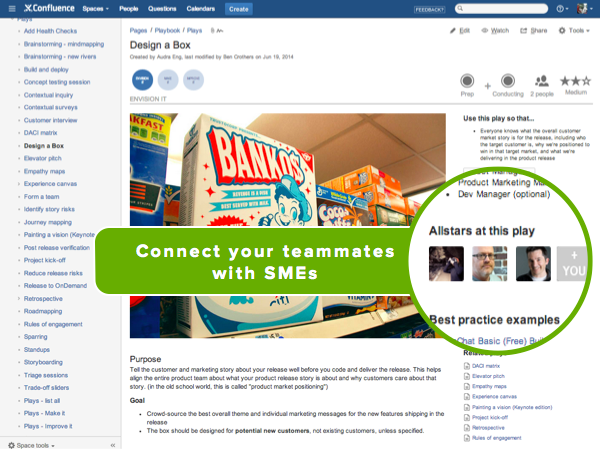
Start building better project spaces today
We hope this blog post gets you thinking about how you can organize your project spaces and get the most out of Confluence. If you haven’t already seen it, check out part one on how you can create a team space.
New to Confluence?
Get up and running in a matter of minutes with a free Confluence Cloud trial.